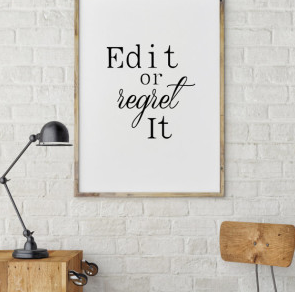
Command i. It’s so easy to use this keyboard shortcut, especially when you’re working with a text that contains many foreign-language words. The general rule in publishing is to italicise foreign words in English text, but have you ever considered whether the word you’re setting in italics really needs to be italicised?
Take for example, this piece of text written especially for a Jewish audience before the important holy days of Rosh Hashanah and Yom Kippur.
So, as the Jewish New Year begins and the sound of the shofar is heard in shuls around the country, I want to wish you a sweet and prosperous year.

The words ‘shul’ and ‘shofar’ come from Hebrew and so it would be tempting to italicise them. BUT.
Here’s what the Chicago Manual of Style says in its foreign words section:
7.52 Roman for familiar words. Foreign words and phrases familiar to most readers and listed in Webster’s should appear in roman (not italics) if used in an English context; they should be spelled as in Webster’s.
Oxford’s recommendation as set out in its Oxford Guide to Style also says to:
“Take into account […] the intended reader’s expectations”.
So given that the words shul and shofar appear in the dictionary and that the Jewish audience reading the text would understand them, there is no reason to italicise them.
Two simple questions to ask yourself:
- Is the word in the English dictionary (as suggested by the client’s house style)?
- Would the average reader of this text be familiar with this word?
Sweet and simple.
So on that note, Shana Tovah to all my Jewish readers. Wishing you a sweet and prosperous New Year!
Written by Melissa Fagan, freelance content writer and editor
I help traditional and digital publishers deliver engaging and informative content that resonates with their readers. Internationally qualified writer and editor with 13 years’ publishing experience.
Email me: melissa.fagan@mfedit.com
Let’s Connect
If you liked this post and you’re passionate about publishing, let’s schedule a meeting to discuss the industry.






